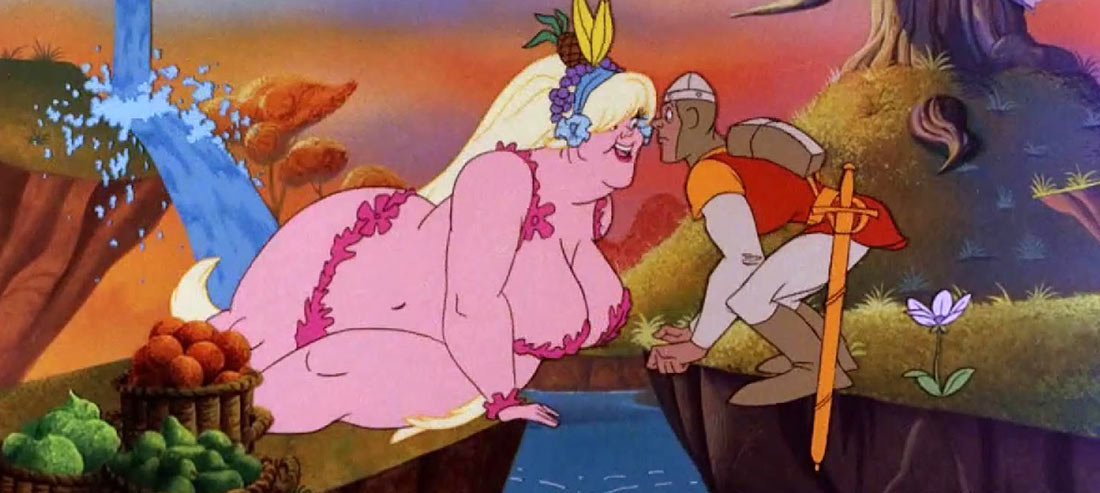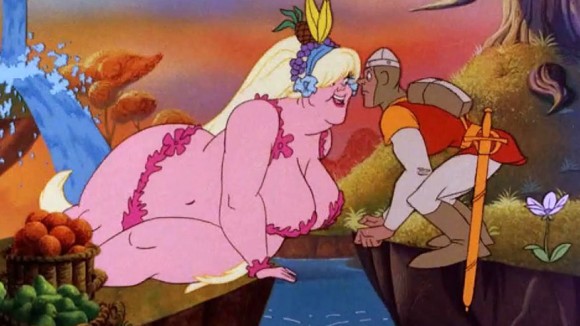

Don Bluth Doesn’t Need Your Money To Make A ‘Dragon’s Lair’ Pitch
Animation director Don Bluth and producer Gary Goldman launched a crowdfunding campaign in late October, asking backers on Kickstarter for $550,000 to develop a pitch for a feature based on their early-’80s arcade game Dragon’s Lair. The seasoned director-producer team cancelled the project a month later, with less than 72 hours left in the campaign, after their campaign stalled out with less than $242,000.
But that’s not the end of the story for the Dragon’s Lair movie, which Bluth and Goldman have been trying to develop for over 30 years. They launched yet another campaign last week, asking for $250,000. They also switched to crowdfunding site IndieGogo, where they could set up a “flexible funding” campaign that would allow them to keep whatever amount people donated, even if they didn’t reach their goal.
Besides the obvious question — if the pitch only cost $250,000 to begin with, why ask for more than double that amount? — there’s a more fundamental question that should be asked: Should crowdfunding be used to fund feature film pitches that result in nothing for the backers?
Kickstarter’s Own Rules Say No
When Bluth and Goldman’s project was listed on Kickstarter, it violated one of that company’s three golden rules, , which is that, “Projects must create something to share with others.” In this case, the thing that the project was creating — a pitch presentation — would not have been available to any campaign backers.
Per Kickstarter’s own rules, “At some point, the creator should be able to say: ‘It’s finished. Here’s what we created. Enjoy!'” Bluth and Goldman couldn’t do that. It’s not necessarily Bluth and Goldman’s fault that their project was approved on that site; they simply took advantage of Kickstarter’s lax enforcement of their established policies. And Indiegogo has no similar restrictions that project creators must create an actual product to share with backers, so they’re safe now.
Nevertheless, a campaign that asks for hundreds of thousands to dollars to create a product that can’t be shared with its backers is antithetical to the spirit of crowdfunding, which was originally set up to support projects that couldn’t be funded through traditional means.
UPDATE: It has been pointed out that the pitch video would have been made available to backers who paid $75 or more. On the Kickstarter campaign, that means that 69% of backers would have been ineligible to see the project they were backing.
Give Me Money So I Can Get More Money
But there’s another side to this, too, which is irrespective of whether backers get to see the pitch: If there’s two people in this world who don’t need money to create a feature presentation pitch, it’s Don Bluth and Gary Goldman.
These guys have produced ten theatrical animated features for major studios like Universal, MGM, and Fox. They’ve been creating pitches for decades, and they understand the game better than anyone. They understand that there’s risk involved in developing a major project, and they’ve always assumed that risk themselves. The reason is simple: if they get hired to produce the film, there’s tens of millions of dollars awaiting them. (They’ve budgeted the Dragon’s Lair movie at $70 million, by the way.) In this instance, they’ve shifted the risk of development onto their fans, yet set themselves up to be the key financial beneficiaries should the film receive additional investment.
Somebody likely advised Bluth and Goldman that the best way to generate enthusiasm for a Dragon’s Lair feature was to get fans involved in a crowdfunding campaign. The advice may have been valid, but it was implemented poorly because now they’ve had a tepid response to two different campaigns, confirming to Hollywood that the Dragon’s Lair fanbase is smaller than had been assumed. In this second lap around the crowdfunding world, Bluth and Goldman have raised a little over $200,000 from 2,934 backers during the first week. Contrast that to a truly successful crowdfunding campaign, like the one for the game Psychonauts 2 which has racked up over $2 million from over 13,000 backers in its first few days.
Don Bluth is an American animation legend. Anyone who has survived Hollywood as long as he has doesn’t deserve to be called anything less. But his campaign to fund a Dragon’s Lair pitch is nonsense. He could have approached this in so many other ways, like setting up a campaign to create a 4-minute short that would have recreated the thrill that players felt when they first played the games, but also would have re-introduced the characters and concept to younger generations.
If you care about animation, give your money to filmmakers who are actually producing films for the people, not to those making secret pitches for Hollywood’s monied elite. Bluth and Goldman may make a Dragon’s Lair someday and they may not. But one thing is for certain: the film’s fate has little to do with whether you hand over your money.

.png)